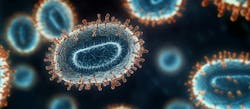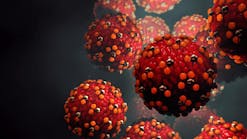A rapid increase in cases of Oropouche virus (OROV) in the Western hemisphere has infectious disease experts on high alert. The authors of a commentary published in Annals of Internal Medicine warn that OROV disease has the potential to become a global public health threat.
With no current vaccine or treatment, it is critical for physicians to be aware of the of OROV and its potential to spread through sexual transmission.
OROV is a virus spread primarily through biting midges but can also be spread through some mosquitoes. The incubation period is between 3─10 days, followed by symptoms that typically last 2-7 days, but nearly 40% of patients may remain asymptomatic. OROV disease case reports dramatically increased in 2024 across the Americas, and as of October 10th, US Centers for Disease Control and Prevention (CDC) has reported 90 cases in U.S. travelers following travel from Cuba. The CDC has issued a Level 2 Health Notice for Cuba to inform travelers about the disease and take precautions against insect bites.
Although insect bites are the primary mode of transmission of OROV, health officials are now warning against the potential for sexual transmission of the virus reminiscent of non-vector transmission of Zika, as replication-competent OROV was detected in the semen of a 42-year-old Italian traveler returning from Cuba. Commercial testing is not yet available for OROV, posing a significant setback in case reporting and surveillance of the virus. The authors share several recommendations for physicians to mitigate the spread of OROV including counseling patients on the possible risks of vertical and sexual transmission and advising pregnant patients to reconsider travel to areas with large outbreaks.





